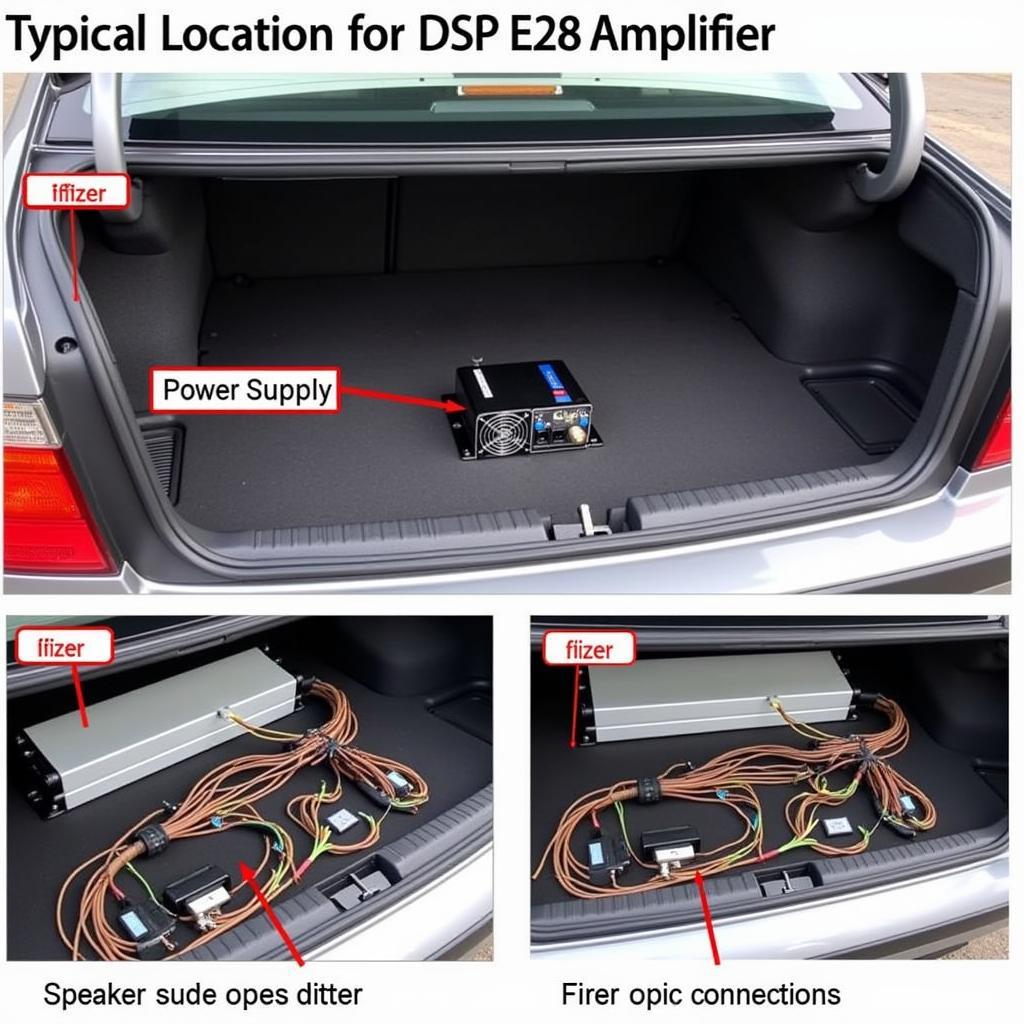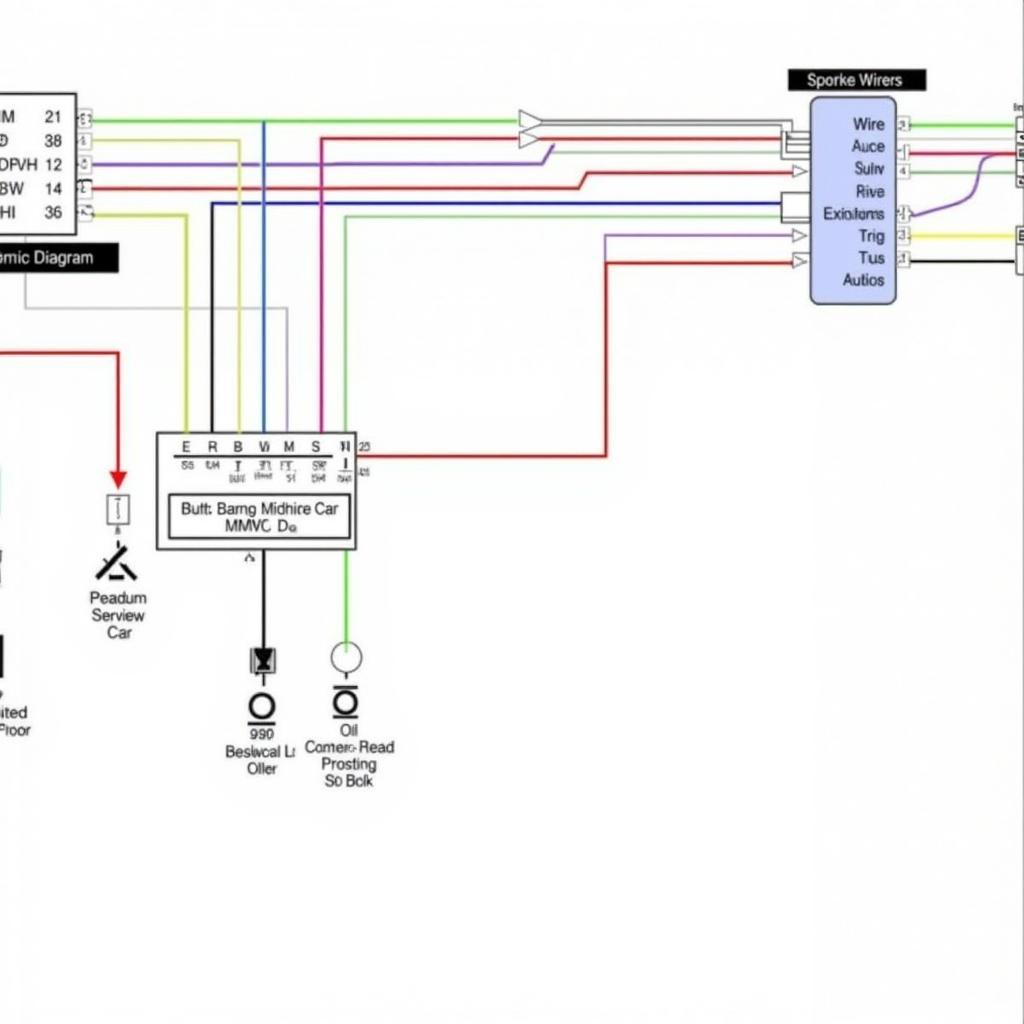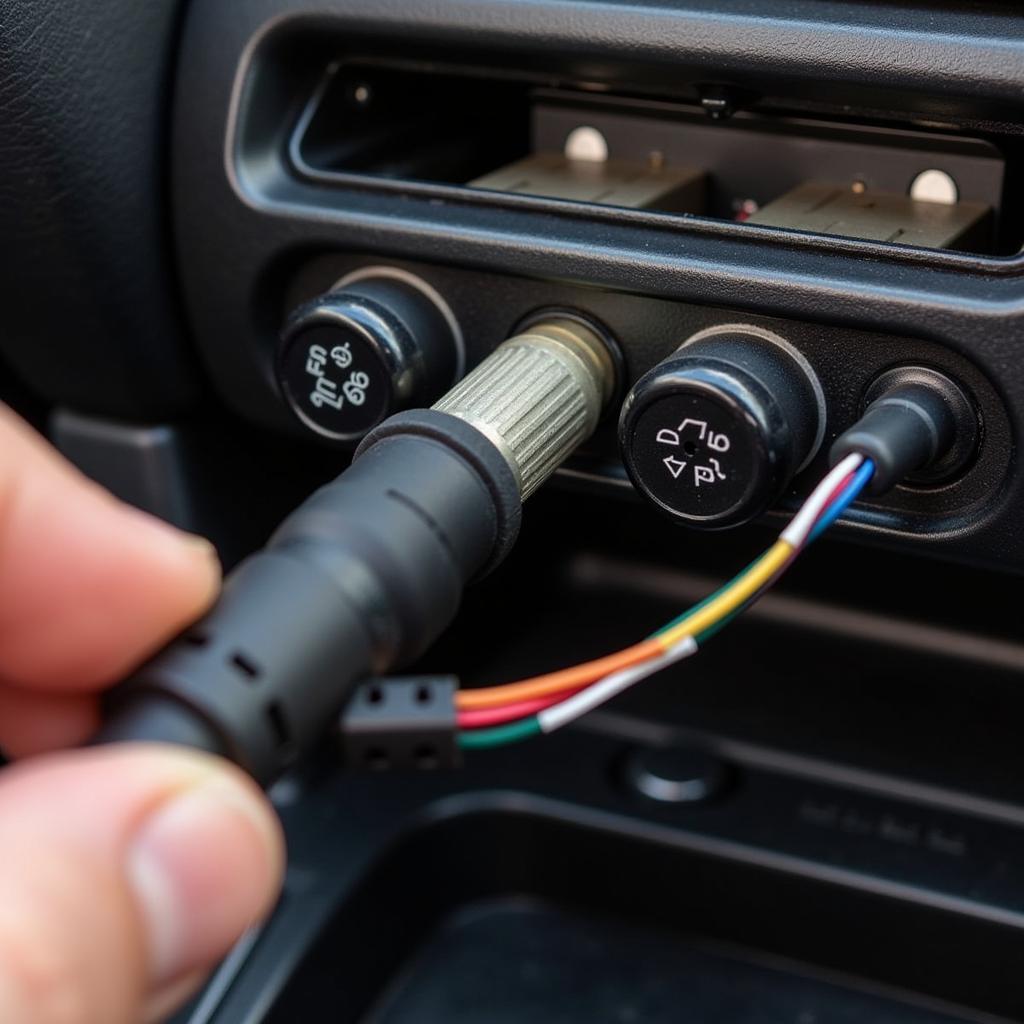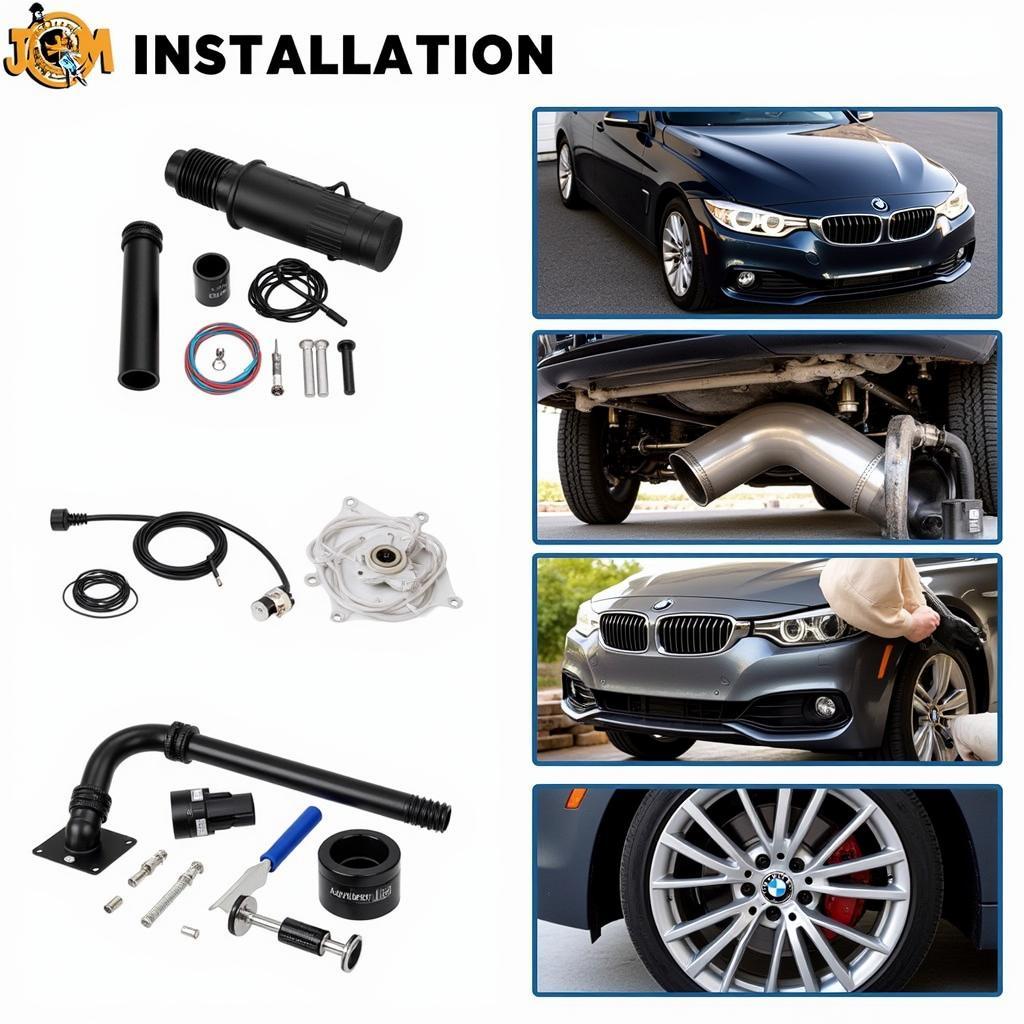The bane of many a BMW E38 owner is the infamous DSP (Digital Sound Processing) audio system. It can be a source of frustration when malfunctions occur, leaving you with subpar sound or even complete silence. This comprehensive guide aims to unravel the complexities of the dsp audio bmw e38, providing you with the knowledge to diagnose, troubleshoot, and even fix some common issues.
Understanding Your BMW E38’s DSP Audio System
The DSP system in the E38 isn’t just a simple amplifier and speaker setup. It’s a complex network of components designed to deliver a premium audio experience. It includes an amplifier, a digital signal processor, multiple speakers, and a sophisticated control unit. This system allows for features like equalization, time alignment, and even individual speaker volume control, all tailored to the specific acoustics of the E38’s interior. However, this complexity can also make diagnosing problems challenging.
Common DSP Audio Problems in the BMW E38
Several common issues plague the DSP audio system in the E38. These range from relatively simple fixes to more complex problems requiring specialized tools and knowledge. Some of the most frequently reported issues include complete system failure (no sound at all), intermittent sound dropouts, static or distorted audio, and issues with specific speakers. Identifying the root cause is crucial for effective repair. Is it a faulty amplifier, a damaged speaker, a wiring issue, or something else entirely? Let’s delve into some diagnostic strategies.
 BMW E38 DSP Amplifier Location
BMW E38 DSP Amplifier Location
Diagnosing Your E38’s DSP Audio Issues
Before you start tearing apart your car’s interior, a methodical approach to diagnosis is essential. Start by checking the simple things first. Is the head unit powered on? Are the volume and balance controls set correctly? If the basics are in order, you can move on to more advanced troubleshooting. This might involve checking fuses, inspecting wiring harnesses for damage, and testing individual speakers. A multimeter can be an invaluable tool in this process. It allows you to check for continuity in the wiring and test the impedance of the speakers.
DIY Fixes for Minor DSP Audio Problems
Some DSP audio issues can be resolved with simple DIY fixes. For example, a blown fuse might be the culprit for a complete lack of sound. A loose connection in the wiring harness could be causing intermittent sound dropouts. If you’re comfortable working with basic tools and have a little bit of technical know-how, you might be able to resolve these issues yourself, saving you a trip to the mechanic. However, if you’re not comfortable working on your car’s electrical system, it’s always best to consult a qualified technician.
Advanced Troubleshooting and Repair
For more complex issues, specialized diagnostic tools and expertise are often necessary. These tools can read fault codes from the DSP control unit, providing valuable insights into the problem’s root cause. Advanced repairs might involve replacing the amplifier, repairing damaged wiring harnesses, or even reprogramming the DSP control unit.
 BMW E38 DSP Wiring Diagram
BMW E38 DSP Wiring Diagram
“When dealing with complex electronics like the DSP system, it’s essential to proceed with caution. A misdiagnosis can lead to unnecessary repairs and added expense,” advises John Miller, Senior Automotive Electrical Engineer at CarDiagTech.
Remote Diagnostics and Programming
In some cases, remote diagnostics and programming can be used to address DSP audio issues. This involves connecting your car to a specialized diagnostic tool that communicates with a remote server. A trained technician can then access your car’s systems remotely, diagnose the problem, and even perform software updates or reprogramming. This can be a convenient and cost-effective solution for certain types of problems.
Preventing Future DSP Audio Problems
Preventing future issues is just as important as fixing existing ones. Regular maintenance, such as checking fuses and inspecting wiring harnesses, can help prevent many common problems. Protecting your car’s electrical system from moisture and extreme temperatures can also extend the life of your DSP audio components.
 BMW E38 DSP Fiber Optic Connection
BMW E38 DSP Fiber Optic Connection
“Regular inspections and proactive maintenance can save you a lot of headaches down the road. It’s much easier to address a small issue before it becomes a major problem,” adds Maria Sanchez, Lead Diagnostics Technician at CarDiagTech.
Conclusion: Keep Your E38’s DSP Singing
The dsp audio bmw e38 system, while complex, can provide a truly immersive listening experience. By understanding its intricacies and employing the right diagnostic techniques, you can keep your E38’s audio system in top condition. Remember, a systematic approach, combined with a little patience, can go a long way in resolving even the most stubborn DSP audio problems.
FAQ
- What is DSP audio in a BMW E38? It’s a sophisticated audio system with a digital signal processor for enhanced sound quality.
- What are common DSP audio problems? Common issues include no sound, intermittent sound, static, and speaker malfunctions.
- How do I diagnose DSP issues? Start with basic checks, then move to fuse/wiring inspections, and potentially advanced diagnostics.
- Can I fix DSP problems myself? Some minor issues, like blown fuses, can be DIY fixes.
- What is remote diagnostics? It allows a technician to diagnose and sometimes fix issues remotely using specialized software.
Need more help? Explore related articles on CARDIAGTECH about BMW E38 audio upgrades and common electrical system troubleshooting.
When you need support, please contact us via Whatsapp: +1 (641) 206-8880, Email: CARDIAGTECH[email protected] Or visit us at: 276 Reock St, City of Orange, NJ 07050, United States. We have a 24/7 customer support team.

